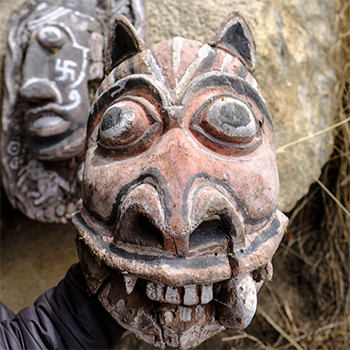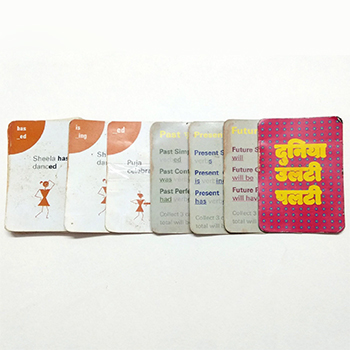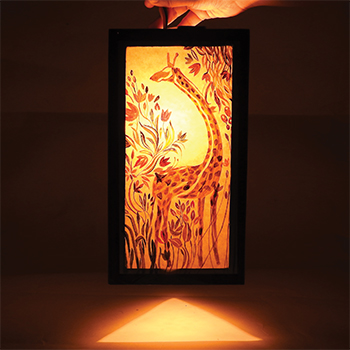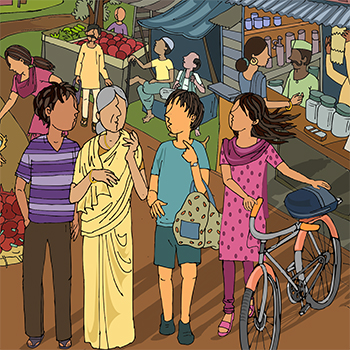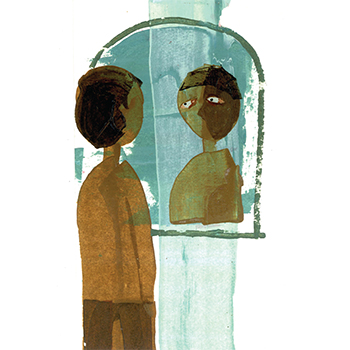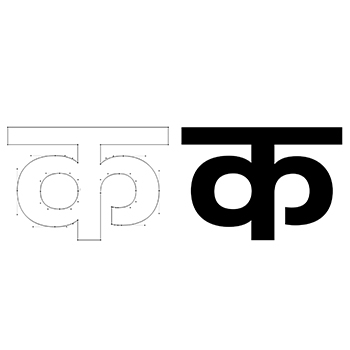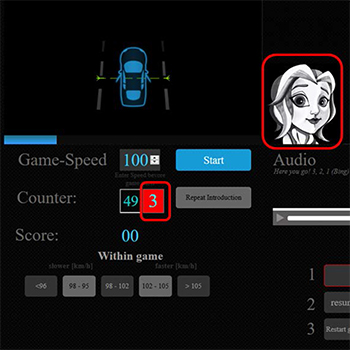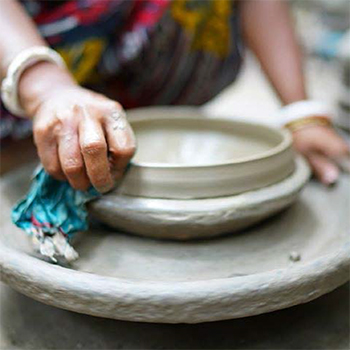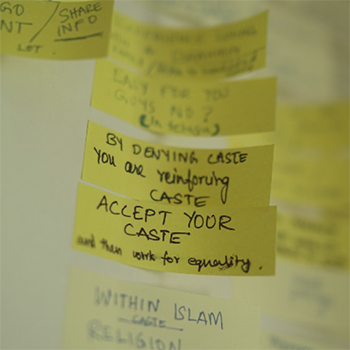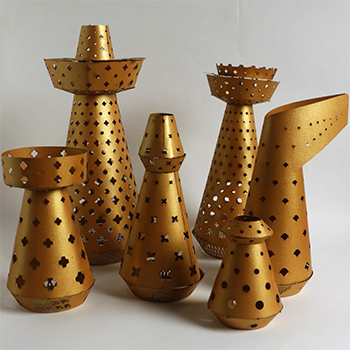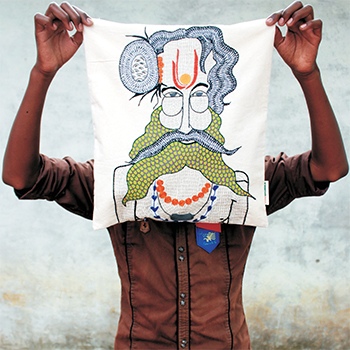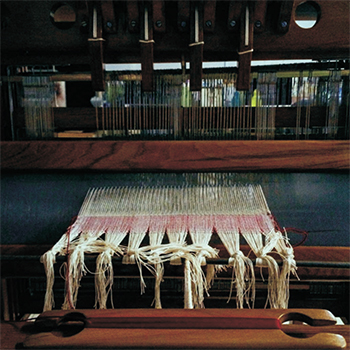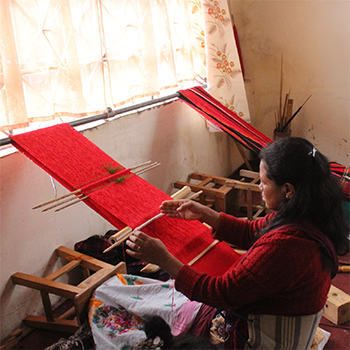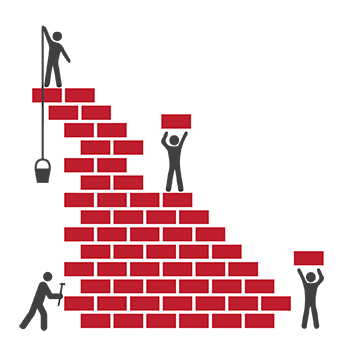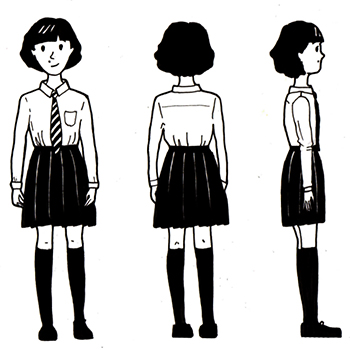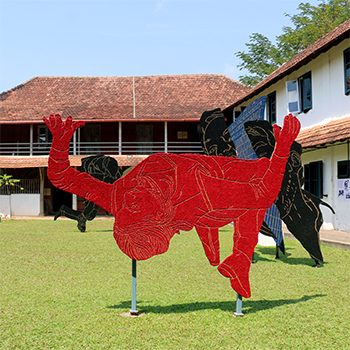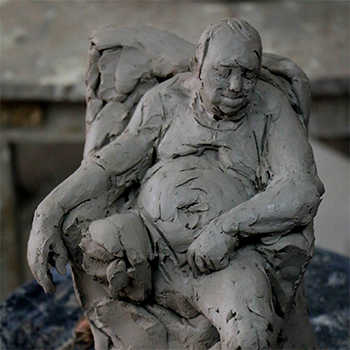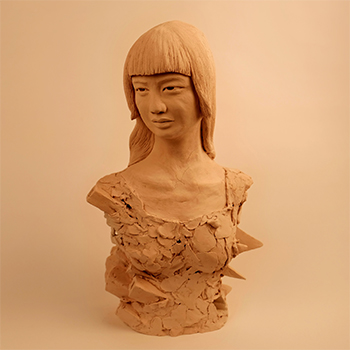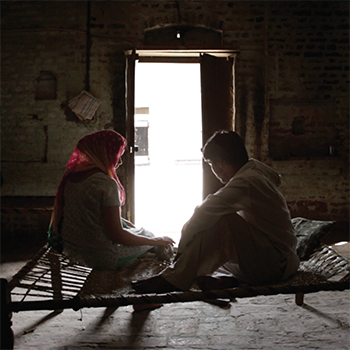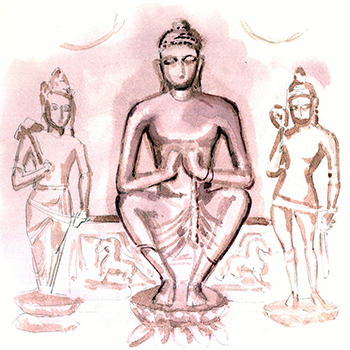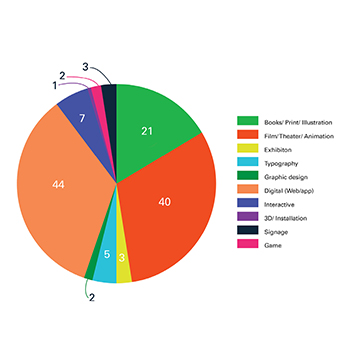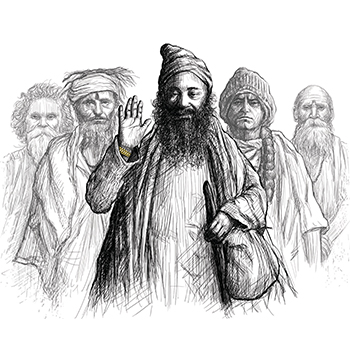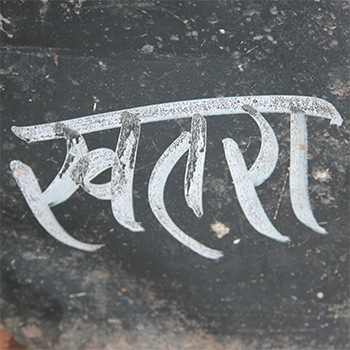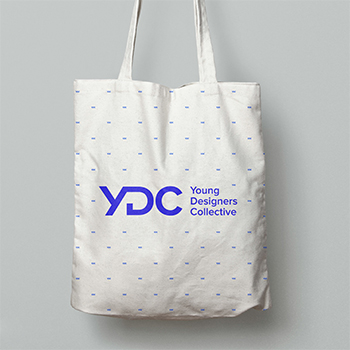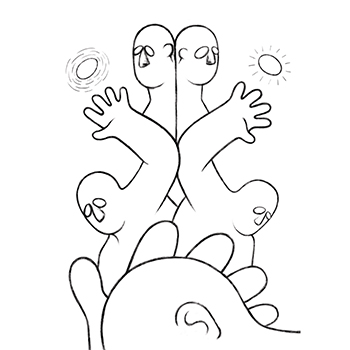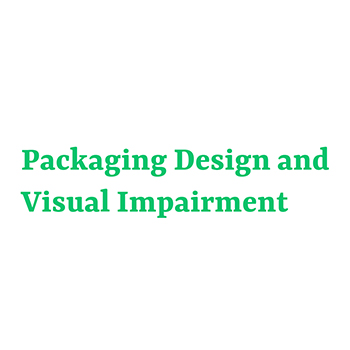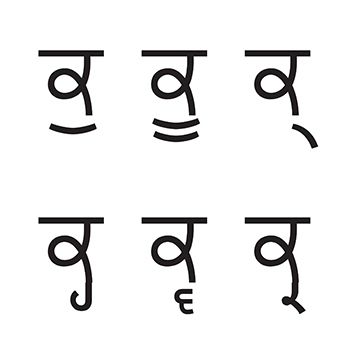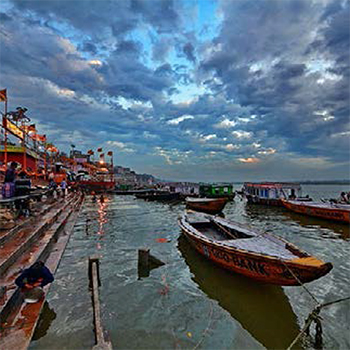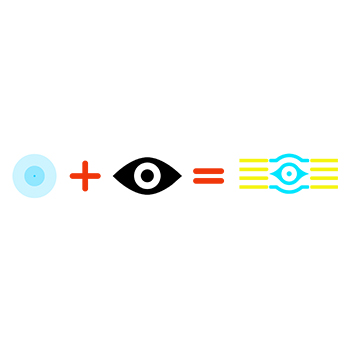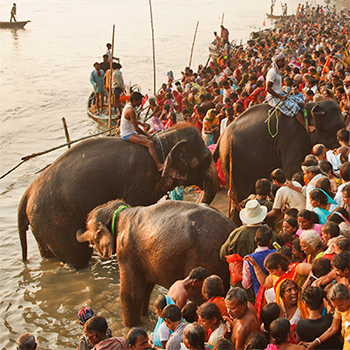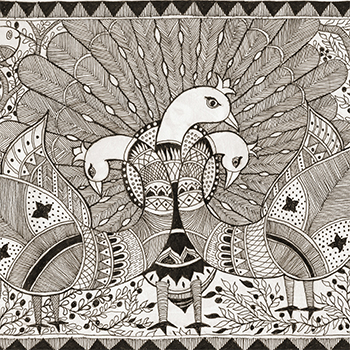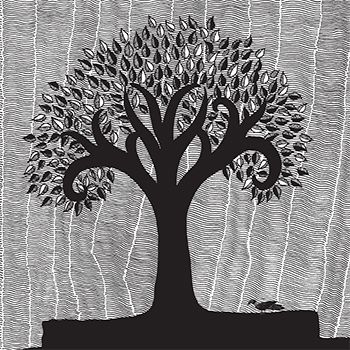Communication Design
Batch 2015-2017
(63 items)
Communication DesignBatch 2015-2017
(63 items)
(63 items)
by Adersh Sreedharan
The inevitable switch from analogue to digital, regardless of the industry: In journalism, it’s the evolution from print to online; in photography and cinema, it’s the switch from film to digital. Even though there are people who still prefer to use film cameras and listen to vinyl music, their attachment to the old systems and the feeling they get from them can’t be compared with the new technologies. Their perspective on cinematography is very different from that of people in the digital age. For them, cinematography is also a craft, and the act of stitching a film takes them closer to the medium.
Cinema is a language, and within it are the specific vocabularies and sublanguages of the lens, composition, visual design, lighting, image control, continuity, movement, point-of-view, etc. Learning this language is a never-ending and fascinating lifelong study.
A cinematographer deals with some duties that are entirely technical. But the technique used in the older analogue cameras is a little different when the digital systems come into play. For the people who gradually switched to digital, they would have gotten updated with the growing technology. But people who haven’t been updated with technological advancements would face a problem understanding the change all of a sudden. But after all this time, why will they switch to digital?
Digital photography records light impulses as electronic charges stored on a memory disc. The image is a matrix of rows and columns, and where they intersect are small squares called picture elements, or pixels, which carry information about brightness and colour.
The image can be altered in innumerable ways. The interaction between digital imagery and photography is made possible by the fact that analogue photographs can be scanned and converted to digital format. The smooth curves and tonal graduations of the analogue image are converted into discrete steps of grids. More directly, digital cameras can now be used to capture images electronically on a desk, bypassing the photochemical process. Once an image is in digital form, its components can be rearranged, extended, deleted, and modified before it is printed. These processes are now made easier by software designed for them. When we add to the ease and power of altering an image, the possibility of simulating photographically realistic components on a computer becomes possible. It appears as though the photographer has gained complete control over the final image and acquired the freedom of the painter to depict whatever he or she can imagine.
by Adersh Sreedharan
As part of my internship programme, I had the wonderful opportunity to work with Prof. Mazhar Kamran, a well-known cinematographer in India.
I was working on the initial storyboarding for the movie Dandi March.
My first time working for a movie challenged my perspective about films and the work's progress. It also strengthened my visualisation capability and overall understanding of framing in movies, the role of the cinematographer, director, or photographer, and the perks of storyboarding before making a film.
This report describes the process I went through to do my task, from the script to the final renders (50+ frames) for the film on ‘recreating Dandi March."
by Adersh Sreedharan
They have been a part of the world for a long time; they are the living treasure we find today, full of life experiences and ideologies.
Above all, their unique stories and moments that still remain in their long-term memory are the ones we shall seek. Old age is our destiny. We are all looking forward to that stage, and every decision we make today, our lifestyle, our social life, and every single thing around us matters. That is going to define our old age.
This project is undertaken to understand the lives of elderly people and to celebrate them by featuring glimpses of their lives and the richness among them. This report describes the process I went through to understand elderly life and finally create images of old age.
by Adersh Sreedharan
India, one of the most populated countries in the world, has an endless diversity, starting from geographical features to languages, religions, art and crafts, customs and traditions, flora and fauna, demographic structure, and so on. Indian culture, which is a fusion of several cultures from all the Indian subcontinents, has been influenced and shaped by a history that is several thousand years old. The diversity of India is unique, giving us reasons to think of India as a ‘mini world’. In order to understand a culture, one has to experience it. This project was undertaken to experience a particular culture, understand it, and then express it visually.
Dronagiri village in Chamoli district of Uttarakhand was chosen as a place with untouched culture to experience and understand a lifestyle that is not known to the outside world. In this village situated at 11,800 ft. altitude, a mountain worshipped by locals is believed to be the one that Hanuman disfigured during his search for the life-saving herb Sanjivani.
This report describes the experience of getting exposed to a new cultural environment, the culture shock one may face because of the unfamiliar way of life, and how we adapt to it. And the process through which the culture is experienced is translated into a visual form.
by Ansari Salik
The Kochi-Muziris Biennale is an international exhibition of contemporary art held in Kochi, Kerala. It was the first biennale of its kind to be held in India. The Kochi-Muziris Biennale is an initiative of the Kochi-Biennale Foundation with support from the Government of Kerala. The exhibition is set in spaces across Kochi, Muziris, and surrounding islands, with shows being held in existing galleries, halls,and site-specific installations in public spaces, heritage buildings, and disused structures. It is an event that happens every two years. It is most commonly used within the art world to describe large-scale international contemporary art exhibitions. As such, the term was popularised by the Venice Biennale, which was first held in 1895.
In May 2010, Mumbai-based contemporary artists of Kerala origin, Bose Krishnamachari and Riyaz Komu, were approached by the then culture minister of Kerala, M.A. Baby, to start an international art project in the state. Acknowledging the lack of an international platform for contemporary art in India, Bose and Riyas proposed the idea of a biennale (a large-scale international exhibition) in Kochi on the lines of the Venice Biennale.
by Ansari Salik
‘Makaan’ is about telling the story of the construction worker community through one’s family struggle. Their ups and downs as they navigate their daily lives are puddled with economic and social hurdles. The narrative of the film juxtaposes similar situations. It expresses differences in the way of responding through the perspectives of children and the elderly, where the children transform the hard reality. In their games, leaves are turned into money, and a ten rupee note becomes a butterfly. The film also tries to capture the essence of "workers" and their struggle in today’s modern time.
by Ansari Salik
The project aims to facilitate English language learning in resource-constrained environments. It aims at making the language more familiar where it is largely alien and enabling engagement with it outside the ‘English classroom’.
One of the key ideas chosen in this project is to improve engagement through games that reflect and are sensitive to the socio-cultural and geographical landscape of the said environment. Expanding the current ongoing project LETS (Learn English Through Stories) through a different approach and making grammar learning intuitive and fun is the main focus of this project.
by Ansari Salik
A traditional classroom environment doesn’t provide much scope for teachers to try different ways of teaching. The population of students and the lack of availability of designed materials that would work for both teachers and students are two of the major constraints. When it comes to learning a second language (SL), the situation is even worse. The project "Can game-play aid structural understanding of language?" aims at facilitating ways of learning and teaching structural English (grammar) in a traditional classroom environment, where English is a second language.
The topic chosen in the grammar teaching is tenses, and the idea is to design a pedagogy that works for both teachers and students. The developed method (pedagogy) begins with a card game that facilitates pattern learning within tenses.
This is followed by a classroom activity designed to reinforce the acquired pattern. The third and final part of the design is a planned lesson (instructional design) to communicate the meaning of the overall concept.
A series of experiments were conducted with a group of 18 students in grades 6 and 7, and the designed materials were tested, improved, and then evaluated on the basis of the qualitative results of those experiments. The report further contains a detailed view of the testing with materials and their iterations. The results show an increase in the level of engagement of the students with the topic. It also indicates a jump in the quality of their ability to look for and find patterns in the materials given to them.
This project expands the boundaries of the ongoing LETS (Learn English Through Stories) project under the Tata Centre for Technology and Design, using games and planned lessons to teach structural English, thereby making grammar learning intuitive and fun.
by Ashika Singh
by Ashika Singh
My internship project was with CLIx at TISS, under the production team. I initially worked there as an illustrator for the digital math game, but very soon i was shifted to work on the English curriculum. The following report will be my illustration work for the audio-based English story. The attempt was to come up with a new style of illustration that would go with the story and be easy for the rural children to relate to.
by Ashika Singh
For years, transgender individuals have struggled for acceptance, protection, and visibility, even among other minorities. With the list of states legalising gay marriage growing and broad acceptance in pop culture, the gay and lesbian population has gained increased visibility and protection in recent years. However, transgender individuals have not been afforded the same rights. The project is an effort to encourage society to emphasise and acknowledge transgender people. Through the medium of poetry. Poems based on the different emotions of a transgender person are the outcome of this effort.
The following report describes my journey as I broaden my understanding of the transgender community and subject and arrive at a design solution that allows me to contribute to the same with the best of my abilities as a visual communicator in a meaningful way. I have tried to understand the existing attitudes and emotions of transgender people and society and to weave together a series of poems as a reflection. The research represented here cannot be considered complete, for I know I have only scratched the surface, but it is a start in trying to understand where the problem lies and the steps needed to be undertaken to rehabilitate this minority community, which is very much a part of Indian past, present, and future.
by Ashika Singh
Nowadays, the rate of broken families is alarmingly increasing. Largely, it is seen today that families are broken up by breakups and divorces. Although the effect falls on both spouses, even the child goes through all the hardships and troubles that remain unseen by all. Its effects are huge on the children, which leads them to depression, insecurity, and many other mental problems.
My project on ‘Children of Broken Homes" will deal with the psychology of a child, including how and what the child goes through mentally when the family is broken. How the separation of parents and regular fights at home affect his behaviour, actions, lifestyle, choices, and decision-making abilities throughout his life. An attempt will be made here to address the issue from the child’s point of view.
by Ashish Kumar
Varanasi, the city of Lord Shiva and the holy Ganga, is known around the world for its rich culture. People have been following their traditions and passing them on from generation to generation. There are colonies of craftsmen in Banaras for crafts like Gulabi Meenakari, Panja Dari, Chunar Red Clay Pottery, Hand Block Printing, Wooden Craft, and many more.
Khojwan is one of them, a suburban neighbourhood located in the south of Varanasi district (Uttar Pradesh). Khojwan is the place for the making of wooden crafts, including Sindoora.
I had seen Sindoora for the first time in the hands of a newly married lady at Ganga Ghat in Banaras. She was worshipping her Sindoora and praying to Ganga Maa for her ‘Suhaag’ (husband). And that’s how I got interested in learning about these beautiful wooden vessels. This project gave me the opportunity to look into the details and the value of these wooden vessels. And how this craft plays an important role in people’s life.
by Ashish Kumar
‘Ek’ is synonymous with ‘one’ in several Indian languages, and Ek Type is a collaborative platform in India under ‘one’ roof to develop fonts. As a part of my internship programme, I had a great opportunity to work with them on their ongoing project, ‘Samar Devanagari Rounded.
This report describes my experience and work process, as well as my understanding of the details and methodology involved in developing a font. I have presented my work in the form of the design process, which includes pre-study, designing, analysing, testing, and refining. It shows my role and involvement in the development, as well as how I came up with a suitable design solution.
by Ashish Kumar
Type design and development is a process that involves the minute refinement of every detail. From scratch to end design, it needs a good understanding of form, space, balance, and a tremendous amount of patience, along with technical knowledge.
This report describes my experiences, work process, understanding of the details, and methodology for developing a font. I have presented my work in the form of a design process, which includes pre-study, designing, analysing, testing, and refining. It shows my role and involvement in the development, as well as how I came up with a suitable design solution.
by Ashish Kumar
Type design and development is a process that involves the minute refinement of every detail. From scratch to end design, it needs a good understanding of form, space, balance, and a tremendous amount of patience, along with technical knowledge.
This project is the continuation of my previous project (designing a monolinear Devanagari font). In which I have designed the basic Unicode character set in regular weight. The aim of the project was to design a matching Devanagari font for Univers for bilingual communication at IDC, School of Design, IIT Bombay.
This report describes my experiences, work process, understanding of the details, and methodology for developing a font. I have presented my work in the form of the design process, which includes pre-study, designing, analysing, testing, and refining. It shows my role and involvement in the development, as well as how I came up with a suitable design solution.
by Aswin Yogesh R
A monotonous environment while driving on long highways can lead to a dangerous state of drowsiness in the driver. The previous advanced design project (ADP) of Amini et al. developed the concept of a driving assistant system that uses gamification features to break the monotony of the driving task. This work picks up this concept and develops a software prototype of an interface to perform Wizard of Oz-experiments in the driving simulator of the institute for ergonomics (IAD) at the Technical University Darmstadt. The development processes are due to the guidelines of the human-centred design process. The context of use for the prototype must be seen from the perspective of the driver as well as from the perspective of the experimenter. The driver is in a monotonous driving environment and can get input via head-up display (HUD), liquid crystal display (LCD), or audio output. The experimenter can monitor data about the current driving behaviour given by the simulator software. In addition, the experimenter uses the prototype on a laptop. The requirements for the development are derived from ISO 9241-110. The developed prototype is an interface between driver and assistant, as well as an interface between experimenter and assistant system. A user of the prototype can control the three output channels with the software prototype. The user sees the content of the HUD and LCD and has a control panel with buttons that enable him to handle his task. In contrast to this, the driver can only see the parts of the interface shown via the HUD and the LCD. The screen content of the wizard interface is shared with the software screenleap and teamviewer on a smartphone in front of the windscreen, which represents the HUD, and on a tablet, which represents the LCD on the middle console of the car. Therefore, it is possible to show the corresponding parts of the interface to the driver.
It is possible for the driver to interact with the assistant system by voice. A start procedure, a quiz, and three driving games that motivate the driver to show better driving behaviour are the main features of the prototype. The games challenge the driver to hold the current speed, the current distance to the vehicle in front, or the exact position in the middle of the driving lane for 60 seconds. The task of the experimenter is to rate the behaviour of the driver during the games and transfer this input to the assistant system. Buttons to rate the behaviour and create a score are included in the interface of the experimenter. Depending on the score, the driver receives feedback about his current performance from the HUD and afterwards about his performance over the complete duration of the game. Furthermore, the experimenter can handle scenarios that pause the game, e.g., lane changes or dangerous situations like emergency stops. Next to the driving games, a quiz is implemented in the prototype. The quiz and the starting procedure are created as an oral dialogue between the driver and the assistant system. To trigger the corresponding audio output, the experimenter has different buttons that suit the current situation. The usability of the prototype for the experimenter is evaluated in this paper. Afterwards, small changes will be considered to improve usability. The prototype developed allows for the performance of Wizard of Oz experiments in the context of the IAD driving simulator. Only these experiments can show if the concept of an assistant system that uses the described gamification features is suitable for a driving scenario with other road users and if such an assistant system can reduce the monotony of the driver.
by Aswin Yogesh R
by Aswin Yogesh R
What has changed in the way we live, and how are the big powers, both within the state and external, influencing our lives?
The film will explore how we have broken away from the traditions of sustainable living and how the development the state undertakes in the name of sustainability, if not helping, is sometimes doing more damage to man, the environment, and our future.
by Aswin Yogesh R
Meritocracy is a social system in which people hold positions exclusively based on their abilities. But India, as a democracy, undertakes several measures to reduce the inequality caused by historical prejudices by showing positive discrimination like caste-based reservations.
The Indian Institutes of Technology were established after Independence to create trained technical personnel of international standards for the nation. In order to establish "merit" as the only criterion for admission into these institutes, they were originally exempt from the policy of reservations. Extant structural inequalities ensured that only the "already privileged" could find their way into these spaces of "merit". As a result, these institutions have until recently been almost exclusively populated by the upper castes, who, through the instruments of merit, were able to transform their caste capital into modern, "caste-less" capital.
All this changed with the introduction of a 22.5% reservation for Scheduled Castes and Scheduled Tribes in 1973 and 27% for Other Backward Castes in 2006. This has transformed the IITs into heterogeneous, complex, and often volatile, politically charged spaces.
The encounter of the ideologies of meritocracy and caste in the spaces of IIT Bombay throws up interesting, difficult questions. This film is an attempt to identify, articulate, and interrogate the complexity caste brings to the IIT Bombay campus by exploring the stories of people who are part of it.
by Kalagouda Patil
by Kalagouda Patil
by Kalagouda Patil
When I was travelling for the first time in Mumbai, I noticed something unexpected. The orientation of platforms to get off trains is different at different stations. For one station, the crowd faced left, and for the next, it faced right. Being a novice, this annoyed me as there were no means by which I could know my station and the direction of the platform other than asking.
This experience led to the inception of the thought behind this project: "How would real-time information be designed for futuristic Mumbai local trains, served inside the high-tech compartments for the future passengers". The real-time information is usually conveyed by the Passenger Information Display System (PIDS). The project doesn’t aim to solve any current problems but will take inspiration from the same problems and visualise the future of info design for PIDS, specially catered to Indian situations (multilingual; language barrier; chaos and crowd inside trains; lack of information system). The first part of the project introduces the Passenger Information Display System (PIDS), its role in public transport, and my area of focus in this design project.
The second part looks at the main conditions that shape this project, such as the current scenario of Mumbai's local compartments, the needs of the user from a novice perspective, and the necessary information. The final part discusses the design and decisions (both visual and motion design) made to accomplish the project.
by Kalagouda Patil
by Kawalpreet Singh Saroy
by Kawalpreet Singh Saroy
‘Aham Bhumika’ is an NGO, a group of like-minded people based in Bhopal, a city in the state of Madhya Pradesh in India. The diverse group consists of artists, housewives, engineers, tourist guides, teachers, and government employees. As a humble start-up, they are striving for the betterment of the underprivileged in rural areas of India.
To help the underprivileged children, destitute, and orphans by involving generous people from the cities by collecting material discarded by them (clothes, bicycles, books, toys, newspapers, etc.) for the underprivileged people One can just walk in and join as a volunteer at Aham Bhumika and make their contribution to the betterment of society. The main project undertaken is the embroidery project in Borda, 4 km from Bhopal. It is to empower the women folk of the region by generating lively hood through embroidery. These panels are then converted into tote bags, cushion covers, and pouches. A fair share of the profit goes to the artists.
They have established collection centres in Bhopal where you can contribute clothes, bicycles, toys, books, and grain. One can also help us by sponsoring various events organised by us and paying for transportation, printing of literature, etc. They also accept monetary contributions through a check or demand draught favouring ‘Aham Bhumika Swayam Sevi Sanstha," payable at Bhopal.
by Kawalpreet Singh Saroy
The project is about celebrating the handmade, not giving away the pleasure of creating a cloth to a machine, knowing where the cotton of a thread comes from, where the thread for khadi comes from, where the cloth for my kurta comes from, etc. The project is about the women of the Ahir tribes in Kutch, who spend their day embroidering vivid patterns that remind one of the works of Paul Klee. Women with no formal training who have created a world around their remote thatched households. The project is about the young weavers at the Handloom School, Maheshwar, who didn’t opt out of their family occupation of weaving but instead will continue the tradition while remodelling with the current fashion trends.
The project is about Shrinu, my guide, and a new recruit at the weaver service centre on Charni Road. With an experience of more than 15 years in jacquard loom, he humbly teaches me the intricacies of working on table loom while himself earning for his children to study well and get ‘good-paying’ jobs. The project is also an attempt to understand Gandhi and his urge for everyone to spin! The man who patronised the richness of Indian textiles and himself wore just a lion cloth At last, it's about celebrating the handmade, not giving the pleasure of creating a cloth to a machine. To know where the cotton of a thread comes from, the thread for khadi comes from, the cloth for my kurta comes from...
by Kawalpreet Singh Saroy
A significant part of the project would be an attempt to learn the work ethics of a weaver, who sits quietly on a loom, weaving a seven-yard fabric. To weave as a daily routine. While aiming to hone my skills with each 'satak-su' sound...
With some experience working on the table loom from my previous project, I will learn to weave on a full-frame loom. It's an extension of Project 2 in the sense that one keeps the 'embedded narrative' intact but also attempts to reflect on the meaning of creativity in our times.
One part of the project is a collaborative association with ten B.Tech. IITB students and Mr. Shrinu (a weaver at Weaver Service Centre, Mumbai) over a period of three months. It would be a collective engagement with weaving, thereby creating handloom products such as scarves, mats, and tote bags. To reflect on the sartorial choices that fill our wardrobe, with high-end brands like Fabindia at one extreme and Khadigram apparel at the other end.
by Kimberly C. Manners
In the month of December 2016, I paid a regular visit to Mawryngkang, a weaving village in Meghalaya where the oor and y-shuttle looms are predominantly used, and to Roilang Livelihood Academy Unit of Bethany Society, Shillong, to learn about the backstrap loom, or loin loom, which is predominantly used all over North East India. Due to its affordability and portability, I’ve brought it back with me to IDC to start a routine of daily practise on it.
The purpose of my research is to dive into the lives of local weavers in Meghalaya to get a sense of the daily practise of weaving as a craft.
by Kimberly C. Manners
by Kimberly C. Manners
The purpose of my project is to study the Meghalaya Matrilineal Society in depth, i.e., the system practised in the state by 80% of the population (tribals) that gives its women lineage importance and inheritance rights and has had a great impact as a boon on the situation of women in the state as compared to the women in the rest of the country but also a grievance to men. The study as well as my personal experiences will be directed towards the compilation of a graphic novel that will subtly focus on talking about the features of society and address the debate of whether it should undergo a transition or not.
Storytelling and writing have been two of my strengths, and my inclination towards visuals and graphics inspired me to do a graphic novel. Although information about the matrilineal culture is accessible, a compelling narrative and visuals would be more engaging to the reader and leave a lasting impression. The novel will be targeted at readers ages 12 and above in Meghalaya but will also be relatable to others.
by Kimberly C. Manners
What drives us to get out of bed every morning? While some of us contemplate what our purpose in life is, others wake up just to put food in their mouths. Every day is a struggle for survival. This project is an attempt to understand the idea of fulfilment and answer the question, "How does living in the 21st century change our understanding of attaining real, lasting, and genuine fulfilment?"
The medium of communication is film. Film is a powerful medium that holds information as well as emotions. The film is a self-documentation of my surroundings and thoughts. It will serve as a reflection of the 21st century’s young adults.
by Kshetrimayum Dideshwor Singh
Art is a diverse range of human activities that involve creating visual, auditory, or performing artworks that express the author’s imaginative or technical skill and are intended to be appreciated for their beauty or emotional power. There are lots of mediums to express one’s artistry. Murals are a form of art that has been in common use since the late 19th century. Understanding narrative mural art is essential for an artist and visual designer.
For my design research seminar, I had chosen to study the narrative mural and art installation. I had the opportunity to work on and study the murals made for the ongoing Dandi project in Hyderabad. I thought it would be a great experience for me to go back to the place where the murals are being made. For the art installation, I went to Kochi for the Kochi-Muziris Biennale 2016. It is an international exhibition of contemporary art held in Kochi, Kerala. Through this study, an in-depth sense of traditional and contemporary art could be developed.
by Kshetrimayum Dideshwor Singh
by Kshetrimayum Dideshwor Singh
The topic deals with the apparatus of the nation-state and self-determination as contexts for art-making. Understanding the conflict between nation-states and self-determination was the origin of this project. My reaction or responses to this conflict were expressed through a series of sculptures, which may give an artistic solution to the viewer of my sculpture.
Our country is known for its unity in diversity. The high mountain ranges, countless rivers and streams, dark forests, vast seas, large river-irrigated lands, and sandy deserts—all these have adorned India with exceptional diversity. Among the people, there are numerous races, castes, creeds, religions, and languages. As we said, India is a sovereign country with 29 states, and people living in India are the children of one mother, whom we call Mother India, but there is a lot of conflict and diplomatic interference between states and nations. Some states demand self-determination, and the nation-state is trying to control them. So when someone is trying to control someone’s freedom, conflict arises. I was particularly focused on studying the burning issue of Manipur.
Manipur is a state in India that is located in the north-eastern part of the country. which is also my birthplace, where I grew up and played around. I have been involved with such conflict zones since childhood, and the conflict still continues in Manipur. So, in this project, I am trying to understand how conflicts arise and study other conflicts in the 21st century. I tried to understand why people want to have self-determination, why people want to be against someone's freedom, and how we may control it and give a peace massage to all the people in an artistic way.
by Kshetrimayum Dideshwor Singh
by Manish Kumar
In India, thousands of women die of pregnancy-related complications, anaemia, and malnutrition. These are easily preventable deaths, requiring only good nutrition and education in basic health care. In large parts of rural and urban India, the public health system lacks basic infrastructure like labour rooms and blood banks, as well as staff and proper equipment for childbirth. Here, an attempt has been made to educate women about pregnancy and maternal health, especially in rural areas, by providing them with pregnancy-related information. The output of the project is a pregnancy calendar from which pregnant women could learn what important steps should be taken during their entire pregnancy period. because the calendar is the common medium of information in rural areas. A calendar is a form that generates clues as to how one should read information. This information is provided in the pregnancy calendar in the form of images, informative poems, and instructions. It is also providing a system for midwives to visit pregnant women at least once a month.
This project is an attempt to find an alternative solution to my previous project, which involved designing, testing, and documenting it.
by Manish Kumar
This project is aimed at getting a personal understanding of maternal health in rural areas of Rajsamond District. For this, I have done an internship at an NGO called Jatan Sansthan, based in the Rajsamond district of Rajasthan. In this internship period, I talked with the actual audience in rural areas and tried to understand the actual problems. During field work, we have done assessments of the quality of maternal and newborn health services and had discussions with females.
My next step will be to focus on the customs of a particular community regarding maternal problems, which will include an audiovisual document on this particular topic.
by Manish Kumar
by Manish Kumar
The people of our society don’t want to accept reality. People have something in their minds, and they think this is right because they have spent most of their lives in that thought. So they refuse to accept the other ways of life, and they become blind to them. This is because, with less education, their minds are not flexible enough to think beyond their own limits.
They are only seeing what they want to see. They are unable to see the other ways, and even if they come across them, they are not ready to accept them. They accept it only as far as they acknowledge it. I wanted to communicate this issue through a film based on the life of a little boy who lived out his dream of living in a city.
by Palash Tukaram Bawankar
The encouragement to select this topic for visual ethnography came from the relevance and importance of the topic in communication design. It was also one of my childhood interests to cut the stamp foiled Ganeshji or any deity or beautiful decoration in golden shining on it on these cards of invitation. It had always been the topic of my curiosity to see how these beautiful pictures are engraved on such small cards and how papers are cut into such small pieces of drawing.
Luckily, visual ethnography gave me the chance to study this craft closely and entirely. I could study the interesting process of manufacturing invitations and wedding cards and its impact on the people in this profession. Some people were stuck with traditional printing technology, which has become outdated due to the influence of the digital world. Some of them could adapt themselves according to the situation and manage to adjust to the technological changes that come from time to time. Due to which they are dwelling for the time being.
Visual ethnography was a completely new field for me. With the excitement of a new subject and an old craft tradition to explore, which is driven by my own interest, I embarked on this journey of understanding the craft of invitations and wedding cards.
by Palash Tukaram Bawankar
India has the dubious distinction of having the world’s largest number of sexually abused children, with a child below 16 years raped every 155th minute, a child below 10 every 13th hour, and one in every 10 children sexually abused at any point in time.
Generations of Indian children have watched their parents remain silent on sexual issues. We learn this silence, which is further complicated by a tradition that demands that every child respect and obey all elders. And so children obey and remain silent, no matter what the elders do.
This project aims to break the communication barrier about the issue between parents and children and encourages children to break the silence about a ‘touching problem’ and openly communicate on the subject with a trusted adult.
by Palash Tukaram Bawankar
Buddhism has had a very large impact on the art history of India. It is the fourth-largest religion followed in the world. Buddhism has three vehicles to enlightenment: the Theravada, Mahayana, and Vajrayana. Vajrayana includes an embodiment of Sunya called Adi Buddha, or Vajradhara. Dhyani Buddhas emanated from Adi Buddha, and Dhyani Bodhisattvas with Saktis emanated from Dhyani Buddhas, which were responsible for creation. Due to major incarnations in Vajrayana, Buddhism has a wider scope for iconography, which can be classified into idols, mandalas, and mudras (hand postures).
In this project, I will be concentrating on mudras. Mudras are non-verbal modes of communication and self-expression consisting of hand gestures and finger poses. It is an external expression of ‘inner resolve’, suggesting that such non-verbal communications are more powerful than the spoken word. Mudras are gestures that symbolise divine manifestation. They are also used by monks in their spiritual exercises of ritual meditation and concentration, and they are believed to generate forces that invoke the deity. Another interesting meaning is given to the idea of the mudra. It reveals the secret imbibed in the five fingers. In such an interpretation, each of the fingers, starting with the thumb, is identified with one of the five elements, namely the sky, wind, fire, water, and earth. Their contact with each other symbolises the synthesis of these elements, which is significant because every form in this universe is said to be composed of a unique combination of these elements. This contact between the various elements creates conditions favourable for the presence of the deity at rites performed to secure some desired object or benefit. That is, mudras induce the deity to be near the worshipper.
This project focuses on illustrating the deeper meaning imbibed in mudras through a series of posters. It will also include the exploration of the delicate forms of mudras through illustrations. It will not only be relevant for the Buddhist followers but also for the students of design and art who want to study and want to know the meaning behind iconography in Buddhism.
by Rahul Kumar Dhanuk
This report presents a survey of the available literature related to the present scenario of technical devices and methods to quantify visual fatigue and its long-term effects on the eye due to computer-related work, along with psychological and physiological aspects.
The introduction of computers during the 1970s gave rise to a lot of controversial debate. Controversies were wide-ranging, ranging from workplace ergonomics, lighting to health and work stress. The overuse of computers makes adults and children both susceptible to computer-related vision symptoms. Performing both important and enjoyable tasks without breaks until near exhaustion may increase eye focus problems and eye irritations. This calls for computer vision syndrome, which is a widely spreading but largely unknown epidemic among computer users. It is considered the top official health-related problem. In ancient times, human beings used to live in forests, and their primary occupation was hunting. Their visual need was to look at distance, but now the distance-dominated world has suddenly changed to a near-point world, as most jobs are now confined to tables and chairs, working on computers, and small office boundaries.
by Rahul Kumar Dhanuk
by Rahul Kumar Dhanuk
by Rahul Kumar Dhanuk
This project is a visualisation attempt of the Kaliyuga predictions, written in Sanskrit in Srimad Bhagavatam, whose English translation and purport have been given by Abhay Charanaravinda Bhaktivedanta Swami Prabhupada. All 17 posters include the original Sanskrit verses, their English translation, a one-word English title, and illustrations that closely depict those predictions' meaning.
Creating posters on Kaliyuga predictions is about making it interesting to attract attention, thus giving the viewers an opportunity to verify its relevance in the present world, which may give them a broader world view to deal with life situations.
Through this project, I learned how pictorial metaphor and analogical juxtaposition can be used to create a visual that conveys meaning and creates an impact in the viewer's mind.
by Rishabh Pandey
This report showcases the existing hand-painted street signs in the areas of Delhi and nearby and the finesse in painting letters achieved by sign board painters through years of practise in different scripts and styles.
It also attempts to shed light on how globalisation and brand communication have affected writing styles in present times.
by Rishabh Pandey
GCC was founded in 1974 by Sudarshan Dheer, the Grand Master of Corporate Communications in India.
The studio specialises in corporate communication projects—identity, literature, packaging, and signage systems—and continues to serve both national and international clientele.
Sudarshan Dheer has designed logos or brand identities for over 100 clients. His work has been featured in more than 50 international publications and won more than 40 awards.
by Rishabh Pandey
Man has been making images since the prehistoric era, and the images have continued to inspire and influence mankind in many different ways. The images have not only shown modern man the lifestyle of cavemen but also worked as a mirror of society and made man realise the good and bad things in life; in religion, they guided man to focus on higher powers; they've inspired man to create what previously seemed impossible; and they've also opened up a way into our world where communication without the use of words becomes possible.
Today, when we look around, we find out that our streets, television, and Internet are filled with images of animals, most of them cats and dogs; people killing each other over some issues; places being destroyed; daily soaps spreading negativity and untrust within families and society; advertisements for self-promotion or to increase consumption of goods; and images spreading cultural values or religion, etc.
Now, with the advancements in technology in cameras, making images has become easier and more accessible than it was five or six years ago. Today, everyone wants to click pictures all the time while on the go.
by Rishabh Pandey
by Sachit Shyam
From the point of view of packaging design, there is very little we know from literature about how blind people relate to the packaging of everyday consumer products in India (Mumbai). As part of a design research project at IDC, we attempt to get answers and insights into how visually impaired people access various products (especially FMCG) on a daily basis. Are there any standards set up by the government or the food industry to aid people? If not, how are people currently accessing products? These are some of the key questions to which we tried to look for answers.
There are also issues like how visually impaired people currently identify, locate, and find information about the products and the shopping stores. In most cases, people are accompanied by a family member or a friend, but if a person lives alone and is independent for most of the daily chores, what are the problems faced by them (if any) and what are the workaround solutions they have devised to tackle these daily problems?
by Sachit Shyam
Since my childhood, I have always been attracted to letter forms. From scribbling random words on the backside of the math book to designing booklets and reports for the design projects during the graduation period, it has been a tremendous journey. I consider this project my first step in professional type design. To be honest, I always had an inclination towards the Latin script and had never thought of designing for or with an Indic script. This project helped me overcome my fear of Indian scripts.
This project aims at learning the process and enabling designers to take design decisions for type-design projects. It specifically focuses on the handwritten Devanagari typeface and further explores the possibilities that can be achieved through the open type features.
by Sachit Shyam
MND progressively affects the motor neuron sensors responsible for sending signals from the spinal cord to muscles. In a lot of cases, tasks as simple as talking and swallowing become impossible. At present, as there is no cure for this, the average life expectancy may be shortened. The symptoms may start in the arms, legs, respiratory, and swallowing muscles and then spread to other regions. Difficulty performing fine tasks like buttoning, writing, closing the jar lid, slipping of footwear, nasal speech chocking while eating and drinking, and frequent falls on uneven surfaces are some of the early symptoms. The medical treatment for MND and ALS is only palliative and symptomatic.
In July–August 2014, the ALS Ice Bucket Challenge, an activity involving dumping a bucket of ice and water on someone’s head to promote awareness of the disease (ALS, also known as motor neurone disease and in the US as Lou Gehrig’s Disease), and encourage donations to research, went viral. The challenge encourages nominated participants to be filmed having a bucket of ice water poured on their heads and then nominating others to do the same. A common stipulation is that nominated participants have 24 hours to comply or forfeit by way of a charitable donation.
by Sachit Shyam
There was a time before the machines in Punjab when each book cover, advertisement, poster, etc. had a character of its own. Each magazine headline and title was different, as the creator did each piece by hand and added to the pool of diversity. At present, it is hard to differentiate between a book on economics and a poetry book.
The desire and need to design a Gurmukhi typeface came from the lack of good Gurmukhi typefaces available today. My aim was to fill in the gap by adding to the Gurmukhi-type palette available. In the project, I explore the roots, golden era, and transition of the Gurmukhi script and design a semi-casual typeface that fits contemporary taste. This project has two essential domains, i.e., the ‘essence’ of the typeface and the quality and ‘fineness’ of the type design, which I juggled constantly, switching between the two as the project progressed.
by Vicky Chindaliya
Uttar Pradesh has a very vast culture. From Lucknow to Vrindavan, from Agra to Varanasi, every city in Uttar Pradesh has a rich culture. But out of all of these, my point of interest was always Varanasi. Varanasi is the India of your imagination. In one of the most colourful and fascinating places on earth, surprises abound around every corner.
There are lots of documentaries on almost every subject on the ghats. I also went there to document the lives of "Mallahs" on the Ghats. Everything there has its own limelight at Bananas Ghats, including Arti, Pandas, Naga Baba, Sanyasi, cremation, marriage, birth, death, and "Te Mallahs".
This report is an attempt to study the socio-economic condition of the boatman community in Banaras from a visual ethnographic perspective. The city of Banaras has now developed into a major pilgrimage centre for Hindus and a key destination for foreign tourists searching for the true soul of Indian culture. However, the Banaras Ghats are incomplete without the boatman. Boats create a very artistic visual culture on the Banaras Ghats. Boatman plays an important role in introducing the city to its visitors. Although traditionally the boatman community belonged to the "Mallah" caste group, this feature is now diminishing as different caste groups enter this profession day by day. In this perspective, this paper ethnographically describes the social structure, material culture, and other aspects of the boatman community. The major source of data for this report has come from the fieldwork at Banaras Ghats.
This report contains various sections, and each section focuses on different issues. The study concludes that despite their significant role in continuing the charm of the Banaras Ghats, they depend mainly on boats for their livelihood. As the numbers of boatmen increase, competition is rising, which is not healthy for their livelihood. Also, this occupation is seasonal. These conditions are creating financial crises in the lives of boatmen. This community is in a poor state and needs special care from the government.
by Vicky Chindaliya
by Vicky Chindaliya
by Vicky Chindaliya
The project was started to add motion to signage to enhance the user experience of amusement parks. We have been seeing static signage for ages. It started in the early Stone Age, or perhaps even earlier. From then to now, signage has been static, but now we have the technology, and signage can be explained with motion, changing the experience as well. But it's not the first time someone has introduced motion signage. Designers already do work in this field. With my research regarding the project, the findings gave new insights into this field, and it was decided that only giving motion to signage would not do any good. Emotions are more important to enhance experiences. So the brief has changed from motion signage to emotion-motion signage. Emotions play a big role in changing moods or experiences; people connect with each other through emotions. It is easier to relate to things with emotions than just random motion signage.
Till now, designers were applying only the laws of gravity and speed to design motion signage, but this kind of signage seems ineffective without emotions. So in this project, it was decided to give character or nature to signage according to its content to better connect with the user.
This project needed a hero, like every story, so the first idea was to create a mascot. But later on, I chose "Arrow" to be my project's hero. I came to this decision after a week’s exploration for a mascot. I tried lots of characters, but those were inappropriate. I needed a mascot, and that doesn’t mean it could be anything. It has to be from the content; a strong and meaningful relationship is necessary because I want to deliver emotions through the mascot, and if the user can’t relate the hero to the story, he is not going to connect with the agenda.
Now there is some 8/10 signage designed. I included very basic tasks to explore, and as the topic is so vast, I had to give more time to the research part than the exception part. The floors can be built at any time if you lay a strong foundation for the building.
by Vidya Bhushan
The project idea came to me from a childhood memory that I had about Asia’s largest animal fair, Sonepur Mela, or Harihar-Kchetra Mela. I still remember that when I was a kid, my father used to take me to this mela along with my siblings. It used to be one of the most fascinating and anticipated times of the whole year. Crowds and lots and lots of toys, giant rotating swings, magic shows, the well of death, and the most attracting, the animal and bird market. I used to insist that my father buy a rabbit from there. Although he never bought it. Apart from all these attractions, there were so many other things that I still remember as beautiful experiences.
Having this opportunity to study visual ethnography, I thought it would be a great experience for me to again go back to the place where my beautiful memories lie, i.e., the Sonepur cattle fair. Through this study, an in-depth sense of cultural and social behaviour could be developed.
by Vidya Bhushan
by Vidya Bhushan
Bihar has a very glorious past. Its past has had a great influence on Indian history. But over the decades, this glory of Bihar has been lost. Be it for reasons like politics, geography, development, or anything else, contemporary Bihar seems to no longer reflect its past. On the other hand, it is considered one of the most backward states in the country nowadays.
This project aims to understand the contemporary aspects and realities of social life in Bihar and depict them through Madhubani painting.
by Vidya Bhushan



